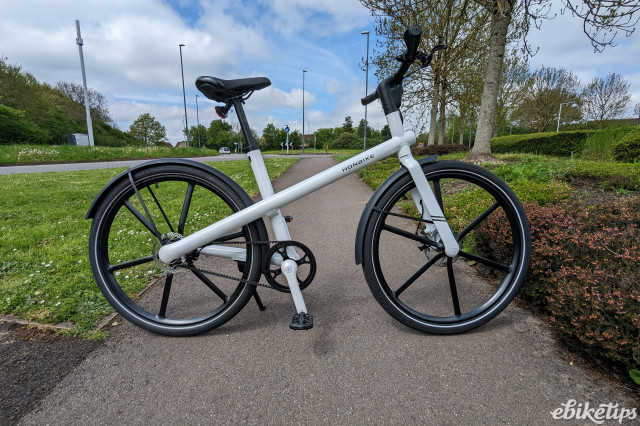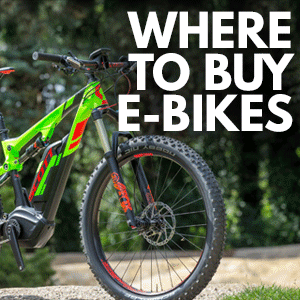Review: Specialized Turbo Vado SL 4.0

Overview
- Light weight
- Motor system is well-integrated and very refined
- Comfortable ride
- No rack mounts
- Some city essentials not supplied
- Reasonably expensive
Specialized has been making the Brose-powered Vado city e-bike for a few years, but with the launch of its new, lightweight SL1.1 motor the company has been rolling out new models across all disciplines. Road was first, then mountain biking, and now it’s the turn of urban and utility cyclists to get a go on the new system. The Vado SL comes in a range of builds, with this, the 4.0, the cheapest at £2,499. Considering the road bikes went up to eleven grand that doesn’t seem too salty, but it’s still a fair whack for a mid-spec city e-bike.
Buy the Specialized Turbo Vado SL 4.0 here
What you’re getting is an alloy frame and fork designed to accept the new SL1.1 motor, which is a mid-drive unit replacing the bottom bracket. The 320Wh battery is in the down tube, and there’s a discreet control panel on the top tube, a small remote, and a charge port just above the motor; cabling is all internal. It’s not as well-hidden as the hub motor and concealed battery on the Ampler Stout but it’s pretty neat. The bike uses a single chainring and this build has a 10-speed Shimano Deore transmission. Tektro hydraulic disc brakes take care of the stopping. Specialized own-brand wheels and finishing kit complete the bike, and it runs on 38mm Specialized Pathfinder tyres.
I’d describe the bike straight out of the box as a leisure build. It has an integrated lighting system (with the rear light in the back of the saddle) which is definitely a plus, but you’ll be wanting to add some mudguards and a kickstand if you’re planning to use the bike around town on a regular basis. There are mounting points for a kickstand, which is good, and there aren’t any seatstay mounting points for a rear rack, which is not. You can fit the Specialized Turbo SL rack, which attaches directly to its DryTech mudguards. If you’re going to buy a Vado SL and you think you’ll want ‘guards and a kickstand then the £2,699 EQ build of this bike is probably the one to go to, although £200 is a fairly steep hike for the extra bits; there are other systems like Specialized’s that will work, but a normal rack won’t. Something low-profile like the Tortec Velocity rack would look good on this bike, and that’s only about £20, but there’s no top mounting point so you’d need to bodge it.. The lighting is very good by the way, with the front Lezyne light sporting a cut-off German-style beam that won’t blind oncoming traffic and sticks all the light on the road, where you need it.
This isn’t the first time I’ve used the new SL1.1 motor. I’ve had some fun aboard the Turbo Creo SL, which at £10,999 is the most expensive bike I’ve ever ridden. It shares its motor with this bike and it’s a good motor in both of these builds. With a 240W peak power and maximum assistance of 180% it’s not as powerful as the Brose motor in the standard Vado, or a Bosch or Shimano motor, but it’s a well-built unit that has a high quality feel. There are three levels of assistance, selectable either from the button on the top tube or with the bar remote, and they’re well-spaced across the motor’s capability.
The bike, at 15.5kg, is fine under its own steam on the flat. There’s no discernible drag from the mid motor at all, and although it’s not light compared to a non-powered bike it’s not difficult to cruise around on. Level 1 on the motor is just a gentle push, the kind you don’t notice you’re getting until you turn it off. At that level the motor noise is barely discernible, a background hum that could just as easily be the tyres on the tarmac. Hop up to levels two and three and there’s significantly more noise, although interestingly the motor in this bike was quieter than the expensive Creo SL road bike; it’s likely that was an early production unit and not quite as refined. It’s a measure of how far we’ve come in the past few years that the amount of noise the SL1.1 motor makes is even worthy of note, but it’s noisier than the new all-but-silent Bosch mid motors, and also the better hub motors in some of the bikes that the Vado SL is directly competing with, the Ampler mentioned above among them.
So it’s not the most powerful motor system, or the quietest, but it is very capable and it has an excellent ride feel. Up my benchmark hill (1.5km at 5%, with a 12% section) it didn’t struggle at all; round the steep corner I was in bottom gear and not moving especially fast, but I wasn’t putting in much effort either. Go steeper than that (plenty of options round here!) and you’ll need to start doing some of the heavy lifting yourself, but for the majority of riding it’s enough assistance. The 44T chainring and 11-42T cassette give a good range of gears, but I’d be tempted to drop the size of the chainring; a 40 or even a 38 would give plenty of top-end range for the type of speeds you’re likely to hit on a bike like this, and you’ll gain climbing gears you’re more likely to need.
The trade-off here, as always, is power and range versus weight. It’s not top in power stakes but the Vado SL feels much more lithe and active when you’re riding, and it’s more engaging as a result. The aluminium frame and fork are stiff, and the bike uses wider Boost-spec hubs, so the handling is very direct and predictable. It’s not an uncomfortable bike though: the 38mm Pathfinder tyres are quick and comfortable on tarmac, and they have enough about them to easily cope with fire roads and towpaths too. They’re not grippy enough off-road to cope with loose or greasy surfaces, but they’re well-judged for the type of riding you’re likely to be doing on a bike like this, and I was impressed by them. The wide handlebar has a bit of give in it, as does the seatpost, and the overall result is a bike that feels purposeful but still comfortable. It’s a nice bike to ride. The steering is neutral and accurate, there’s no dive at the front under braking, and the Tektro hydraulic disc brakes are easily powerful enough to inspire confidence. Overall it’s an easy bike to enjoy once you’re on board. It doesn’t really have any quirks, it’s just efficient and comfortable.
Who’s it for? Well, you’re more likely to be looking at a bike like this if you’re already a cyclist and looking for something that’s more like riding a non-powered bike, but with a bit of help where you need it: perhaps for a longer commute that’s a bit much under your own steam every day, or maybe because you want to keep doing distances that are moving out of your physical capability, for whatever reason. Range-wise it’s hard to put a figure on a bike like this: if you have some cycling fitness and the terrain you cycle is reasonably flat then you’ll barely need the motor. Even going full gas it’s pretty efficient: three laps of my commute (27km with 500m of climbing) on maximum assistance didn’t exhaust it, which on a 320Wh battery is good going. There’s the option with this bike to fit a second, 250Wh battery that sits in the bottle cage and plugs into the charge port, so if the standard range isn’t enough you could go longer.
You might also be looking at a more lightweight option if you have difficulty with the weight of a full-fat e-bike, and at 15.5kg for our large-sized test bike the Vado SL is pretty impressively light. That’s six or seven kilos less than many equivalent e-bikes with heavier mid motors, and it’s also lighter than the aforementioned Ampler, or the Juicy Bikes Ticket, both of which are more direct competitors. The Ampler is more of a full city build, though. Anyway, if your regular bike usage involves lugging your bike up or down flights of steps or lifting it anywhere that lack of mass will be a real plus point.
Value-wise, for £2,499 you’re getting a good quality bike with an excellent motor and decent spec componentry. If it was my money I’d probably swallow the extra £200 and get the city-ready EQ build. The more expensive 5.0-series bikes in the range obviously score improved components, including the Specialized FutureShock head tube damper system, which is excellent. There’s merit in all of the builds, but I’d say for me the 4.0 EQ is probably the pick. I enjoyed riding the Turbo Vado SL - it’s an enjoyable bike if you’re an active cyclist, and light enough to make it feel a bit more alive underneath you. If you’re after some fun and lighter assistance, it’s one for the shortlist.
specialized.com
1 comments
Hi, How would you compare the Specialized Vado SL tested against the Ribble Al E please. Usage would be general mixed road/light off road and maybe credit card touring. As 2 bikes will be carried on a Campervan bike rack 15kg is probably the max. Thanks.














